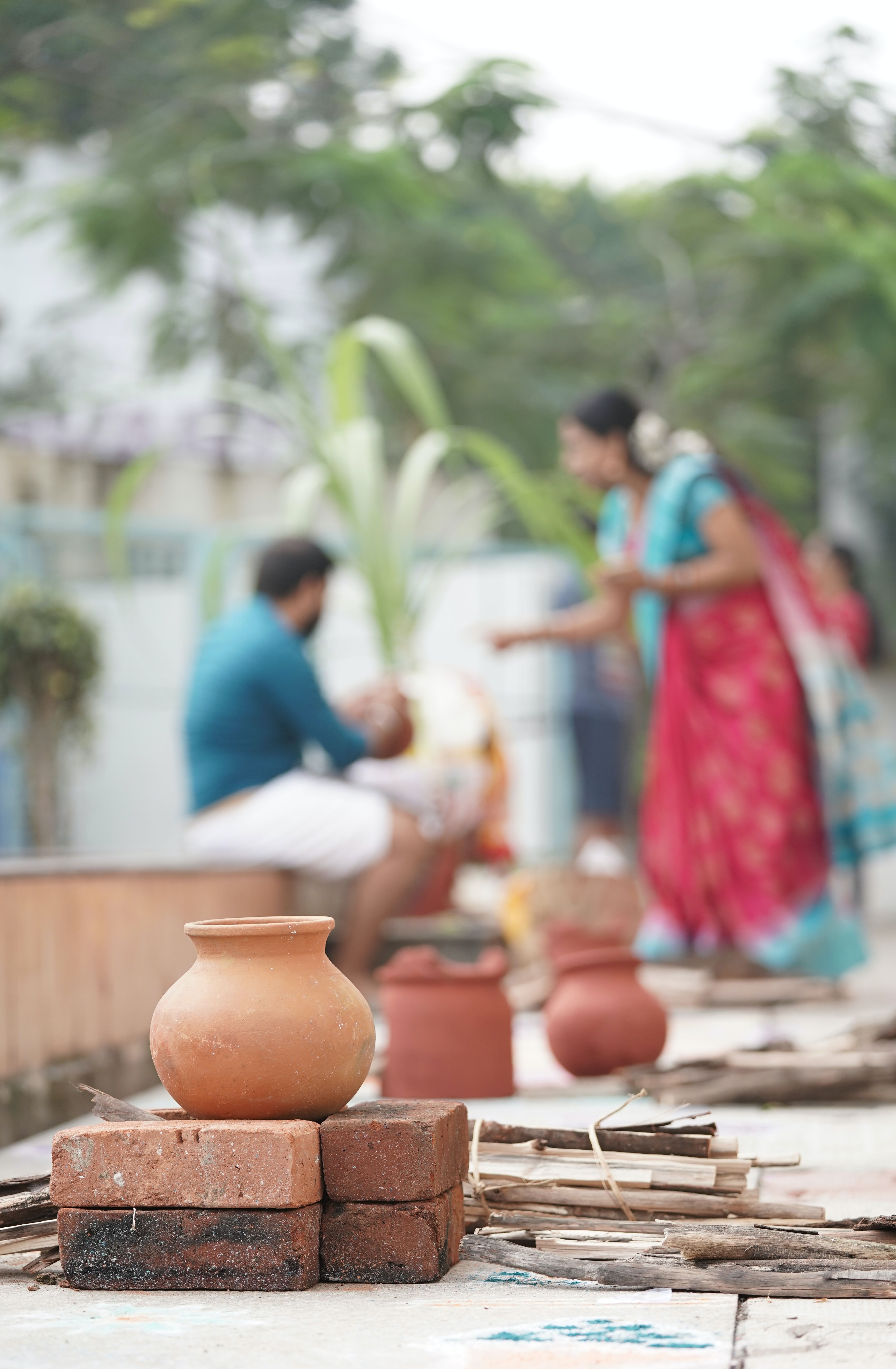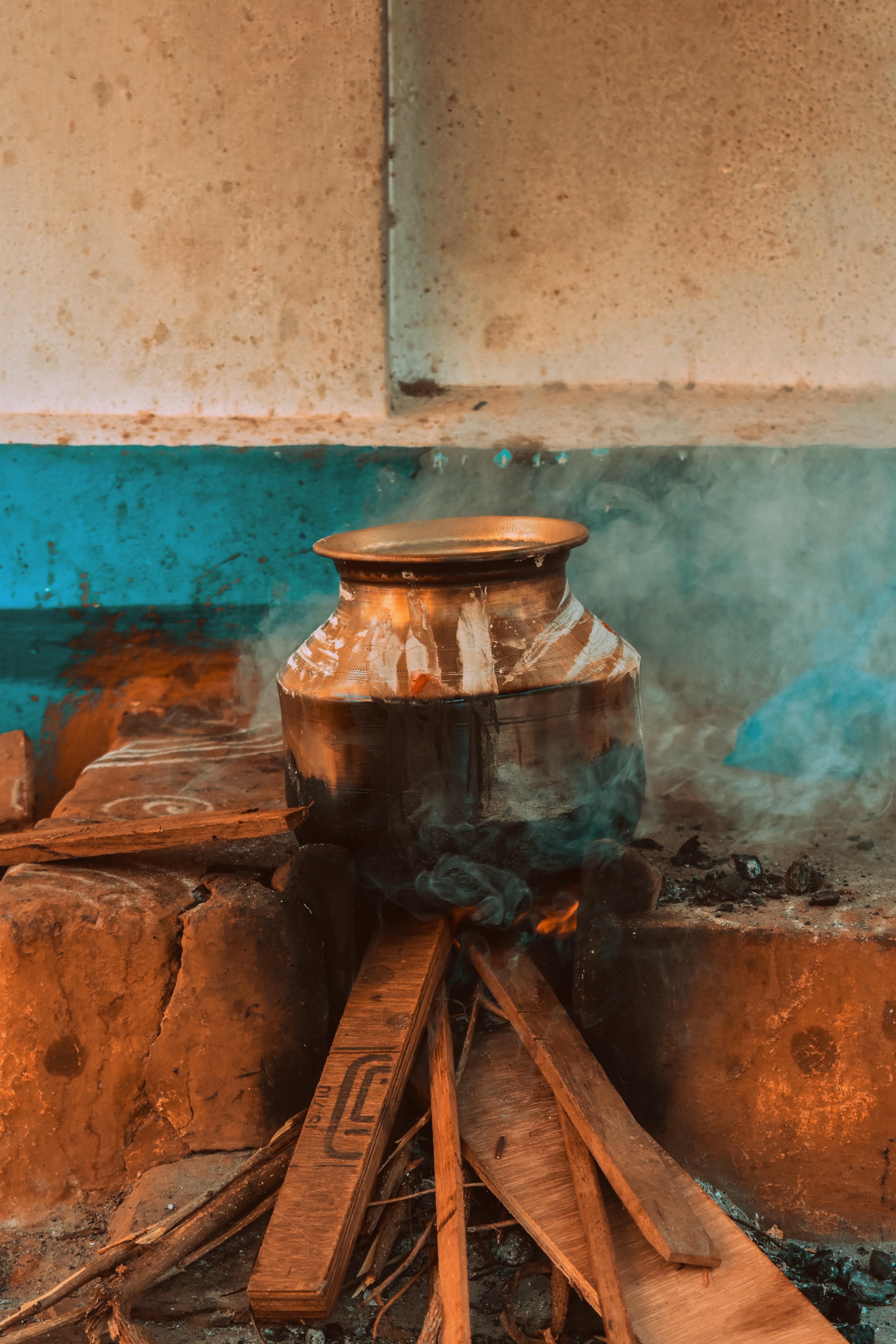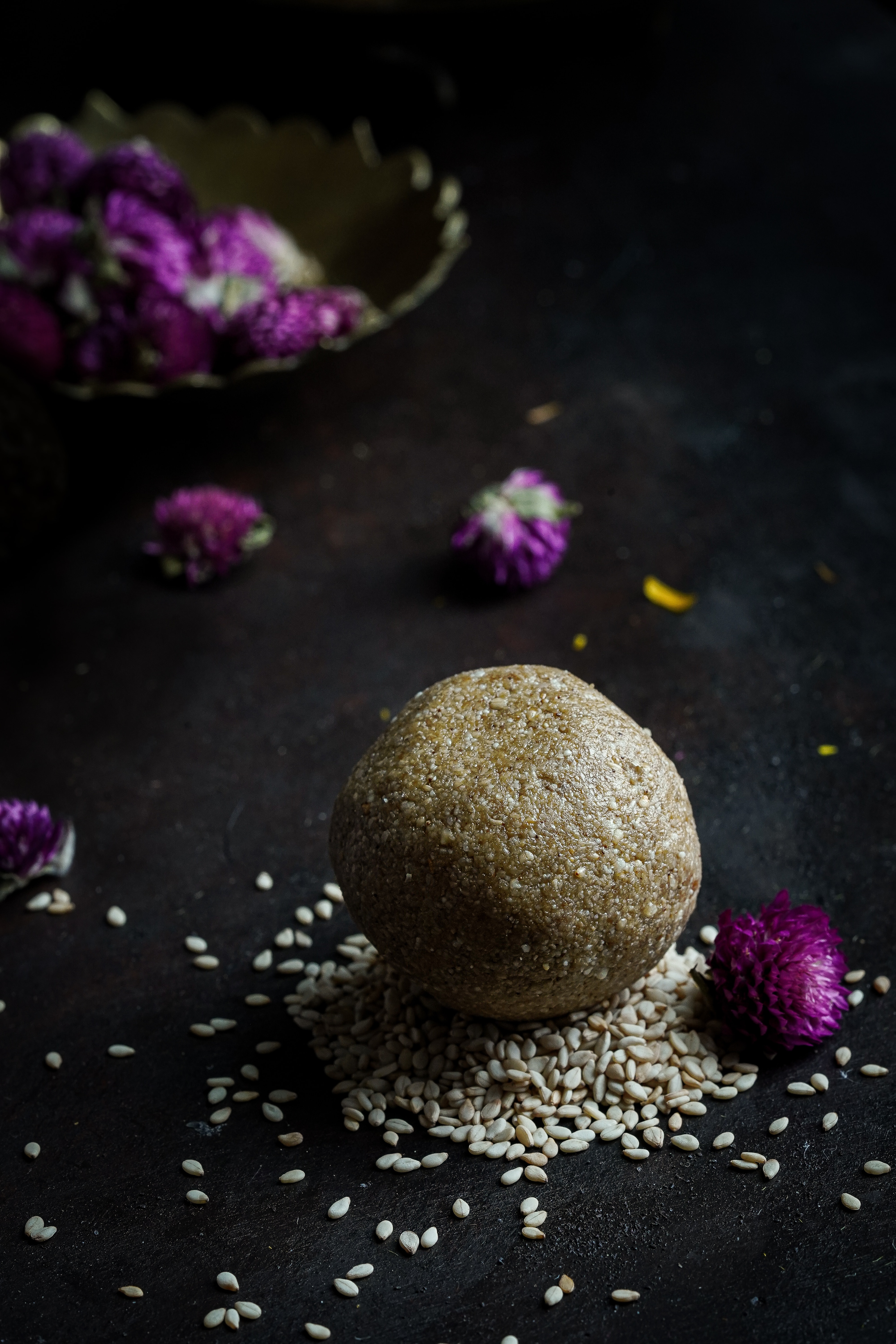When is Makar Sankranti 2025 - Celebrations, Cultural Variations, and More
Makar Sankranti is an annual harvest festival celebrated on January 14th. It signifies the day when the Sun transitions into the zodiac sign of Capricorn, known as "Makara" in Sanskrit. This solar shift is referred to as "Sankranti," which is how the festival gets its name, Makar Sankranti. It also marks the start of longer days and shorter nights, symbolizing the end of winter and the onset of spring.
People engage in activities like kite flying, preparing sweets made from jaggery and sesame seeds, and taking holy dips in rivers. In this blog, we will explore the significance of Makar Sankranti, its importance, and the key dates for celebrating Makar Sankranti 2025. Happy Makar Sankranti!

Also Read : Essay on Makar Sankranti
Makar Sankranti 2025 Date and Time
Significance of Makar Sankranti 2025
Makar Sankranti 2025 is celebrated to express gratitude to nature for a bountiful harvest and to invite prosperity. The festival holds deep cultural and religious significance. Here are some key reasons why it is important:
Harvest Celebration: Farmers thank the Sun and the Earth for a fruitful crop.
Cultural Unity: Makar Sankranti is celebrated in diverse ways across different states in India, fostering a sense of unity.
Religious Significance: Bathing in sacred rivers like the Ganges is believed to purify one's sins.
How Makar Sankranti is Celebrated?
Makar Sankranti is celebrated with much enthusiasm and various joyful traditions:
Kite Flying: The skies are filled with vibrant kites, making it a delightful activity for people of all ages.
Making Traditional Treats: Special sweets like til-gud laddoos, made from sesame seeds and jaggery, are prepared and shared to spread joy.
Rituals and Prayers: Many observe the tradition of taking a sacred dip in rivers and praying to the Sun God for blessings.
Bonfires and Folk Dances: In certain regions, the festival is marked by lighting bonfires and performing traditional dances.
Happy Makar Sankranti 2025 Wishes:
As the auspicious festival of Sankranti unfolds, express your warmth and joy with heartfelt Happy Sankranti wishes, sharing blessings and festive cheer with your loved ones. Let these wishes illuminate the celebrations and bring happiness to every heart.
May the warmth of the sun's rays on Makar Sankranti fill your life with joy and prosperity!
Wishing you a harvest of happiness and success as you soar high like the kites in the sky this Sankranti.
May the sweetness of sesame and jaggery add flavours of love and unity to your Makar Sankranti celebrations.
As the sun begins its journey northward, may your life be filled with positivity and new beginnings. Happy Makar Sankranti!
Sending you warm wishes for a season filled with laughter, family gatherings, and the joy of Makar Sankranti.
May the vibrant colours of the kites paint your life with happiness, and the gentle breeze of Sankranti bring peace to your days.
On this auspicious day, may you be blessed with good health, wealth, and the strength to overcome any challenges. Happy Makar Sankranti!
As the sun makes its way to the northern hemisphere, may your dreams and aspirations also reach new heights. Happy Sankranti!
Wishing you and your loved ones a Makar Sankranti filled with the sweetness of tilgul and the warmth of festive cheer.
May the beauty of the kites soaring high reflect the aspirations you have for the coming year. Happy Makar Sankranti!

Colourful Kites and Makar Sankranti Decoration:
One cannot think of Makar Sankranti without envisioning the sky painted in vibrant hues of kites. Makar Sankranti decoration involves adorning homes with colourful rangoli, vibrant torans, and beautiful kites that fill the sky with an artistic spectacle.
Kites, captivating in their simplicity, have been a source of joy and fascination across cultures for centuries. These lightweight flying objects, typically made of paper or fabric stretched over a frame, are tethered to a string. The art of flying kites is not just a recreational activity; it is deeply embedded in various cultural celebrations and festivals worldwide, including Sankranti in India.
Feasts and Makar Sankranti Food:
Makar Sankranti is a festival that tantalises the taste buds with an array of mouth-watering dishes. From the quintessential laddoos to savoury chikkis, the festival's food offerings are a delightful blend of sweetness and crunch.

Lohri Makar Sankranti:
In various parts of the country, especially in Northern India, Makar Sankranti is preceded by the vibrant Lohri celebrations. Bonfires, traditional songs, and dancing set the stage for the joyous festivities that continue into the heartwarming spirit of Lohri Makar Sankranti.
The Essence of Makar Sankranti:
But why is Makar Sankranti celebrated with such fervour? The answer lies in the deep-rooted cultural and agricultural significance it holds. It marks the harvest season, a time when farmers rejoice in the abundance of their hard work and offer gratitude to the Sun God for a bountiful harvest.
Different Names of Makar Sankranti:
As Makar Sankranti approaches, the diversity of its celebrations across India is noteworthy. Known by different names like Makar Sankranti Pongal, Uttarayan, and Maghi, the festival's essence remains a celebration of life, prosperity, and the lengthening days.
Makar Sankranti Celebrations Across India:
The Story of Makar Sankranti:
The festival is steeped in mythology, with various tales that add a magical touch to its celebrations. One such story revolves around Bhishma Pitamah from the Mahabharata, who waited for the auspicious moment of Uttarayan to leave his mortal coil.
Makar Sankranti 2025: Honouring the Past, Embracing the Future:
In festive fervour, Makar Sankranti invites reflection on the cyclical nature of life. As the Sun transitions into Capricorn, it symbolises not just a celestial event but a profound connection to our roots, traditions, and the enduring spirit of joy that transcends time.
Conclusion:
Makar Sankranti 2025 beckons us to join hands in celebration, to fly kites that reach new heights, and to savour the taste of culinary delights that connect us to our cultural roots. It's not merely a festival; it's a story written in the skies, in the food we share, and in the traditions that bind us together. So, here's to a Happy Makar Sankranti 2025 – a tale of joy, togetherness, and the warmth of the winter sun. Happy Makar Sankranti!
FAQs on Happy Makar Sankranti 2025: Best Wishes, Messages, and Celebration Ideas
1. When is Makar Sankranti in 2025?
Makar Sankranti 2025 will be celebrated on January 14, 2025. It is an important festival marking the Sun’s entry into Capricorn, symbolising the start of longer days. Don’t forget to send Happy Makar Sankranti wishes to your loved ones!
2. Why is Makar Sankranti celebrated?
Makar Sankranti is celebrated to honour the Sun’s journey northwards, also known as Uttarayan. It marks the end of winter and the beginning of the harvest season. Share Makar Sankranti's wishes with friends to spread joy on this special day.
3. What are some creative Makar Sankranti Rangoli ideas for 2025?
Makar Sankranti Rangoli is a colourful tradition where people create designs using coloured powders, flowers, and rice. It is believed to bring good luck and positive energy to homes during the festival.
4. What are some popular Makar Sankranti wishes in English?
Common Makar Sankranti wishes in English include, “Wishing you a harvest of joy and happiness this Makar Sankranti!” and “Happy Makar Sankranti 2025 to you and your family!”
5. How can I send Makar Sankranti wishes in Marathi?
To wish your friends and family Makar Sankranti wishes in Marathi, you can say, “तुम्हाला मकर संक्रांतीच्या हार्दिक शुभेच्छा!” or use more personalised greetings for a meaningful message.
6. How do I send Makar Sankranti wishes in Kannada?
In Kannada, you can say, “ಮಕರ ಸಂಕ್ರಾಂತಿಗೆ ನಿಮ್ಮಗೆ ಹಾರ್ದಿಕ ಶುಭಾಷಯಗಳು!” to send Makar Sankranti wishes in Kannada to friends and family during this auspicious time.
7. When is the exact time of Makar Sankranti 2025?
Makar Sankranti 2025 date and time is on January 14, 2025, with the Makar Sankranti 2025 moment taking place at 9:03 AM. This is when the Sun enters Capricorn.
8. What are the common Makar Sankranti customs?
During Makar Sankranti, people fly kites, prepare traditional sweets like tilgul, take holy dips in rivers, and celebrate the harvest season. It’s a time to share happy Makar Sankranti wishes and express gratitude for nature’s blessings.
9. What is the significance of Makar Sankranti 2025?
Makar Sankranti 2025 marks the transition of the Sun into Capricorn, symbolising the end of winter and the beginning of a more prosperous time. It is a day to celebrate the harvest season and share happy Makar Sankranti 2025 wishes.
10. Can you share Makar Sankranti 2025 wishes in Marathi?
Yes, sending Makar Sankranti wishes in Marathi is a tradition. You can say, “मकर संक्रांतीच्या दिवशी तुमच्या आयुष्यात सुख आणि समृद्धी यावी अशी शुभेच्छा!”
11. How can I celebrate Makar Sankranti 2025 at home?
Celebrate Makar Sankranti at home by flying kites, making traditional sweets, preparing Makar Sankranti rangoli, and spending time with family. Don’t forget to send Happy Makar Sankranti wishes to everyone.
12. What are some traditional Makar Sankranti sweets?
Some popular sweets made during Makar Sankranti are tilgul, gajak, and jaggery sweets, often shared with friends and family while exchanging Makar Sankranti wishes.
13. How is Makar Sankranti celebrated across India?
Makar Sankranti is celebrated in different ways across India. In Gujarat, people fly kites, in Tamil Nadu, it’s called Pongal and celebrated with feasts, and in Punjab, it's known as Lohri during which people dance and enjoy around bonfires. Each region has its way of sharing Happy Makar Sankranti wishes.
14. How do I wish someone a Happy Makar Sankranti in English?
You can wish someone Happy Makar Sankranti in English by saying, “Wishing you a joyous and prosperous Makar Sankranti! May this festival bring warmth and happiness to your life.”







